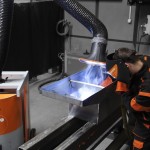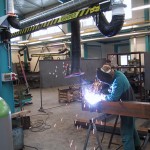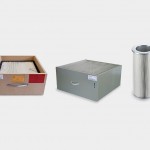Contaminant categories: from breathable to ultrafine
98.9 percent of welding fumes are harmful to health. Danger lurks in a size under 10 microns for respirable particles.
Health risks from welding don’t come only from welding flashes burning the eyes. During welding processes, hazardous substances arise from the weld as gases or particles that would be distributed in the air and pollute it indefinitely, were it not for occupational health and safety measures. OSH experts separate these particles into three categories, based on their size according to DIN EN 481: the breathable fraction, the respirable fraction and the ultrafine fraction.
- Breathable fraction: This particle category indicates the proportion of particles that are breathed into the body through the mouth and nose. They include particle sizes from 10 to 100 microns. In the past this fraction was referred to as “total dust.”
- Respirable fraction: Previously this fraction was known as “fine dust.” It represents particles from 0.1 to 10 microns. These particles penetrate all the way to the alveoli when inhaled and can lodge there and cause damage.
- Ultrafine fraction: During welding, particle-shaped substances develop that are extremely fine. On average they measure less than 1 micron across and are therefore respirable. In the narrowest sense, this is what experts mean when they refer to welding fumes. As a separate fraction they are considered ultrafine when they measure less than 0.1 micron in size.
98,9 percent of all welding fume particles are smaller than 0.4 microns, according to official studies by the Wood and Metalworkers Trade Association. The majority of welding fumes is therefore harmful to the health of welders and other nearby employees. Thermal cutting and other related processes produce particle-shaped substances that are only partially respirable. The amount of particulate matter depends on the combination of processes and materials used. Differing particle sizes are created by each process group with various particle morphology. Morphological examinations indicate that individual welding fume particles show no homogeneous composition.





